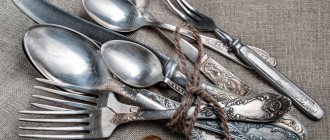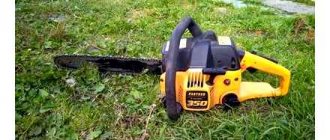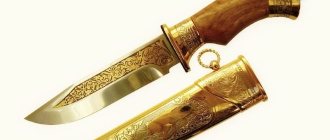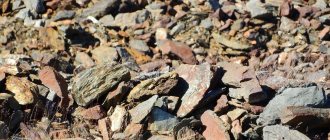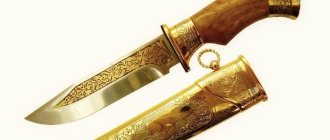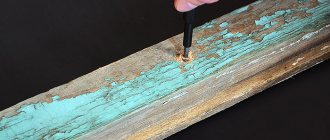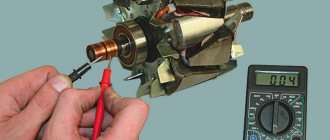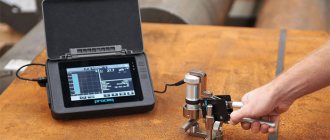home
Reading time 1 min Published 08/30/2019
In this review we will touch on the topic of cleaning coins using simple household chemicals. Let us say right away that only simple coins can be cleaned with such chemicals. If you have rare coins in your hands, like two kopecks from 1925 or 1927, then using household chemicals to clean them is like signing their death warrant. And when it is carried out, it will be impossible to return to the previous state.
For express cleaning, the CILLIT product was chosen. According to the manufacturer, it is designed to remove limescale and rust. We will check how the metals from which domestic coins are made react to it. And how well he can clean coins of varying degrees of “destruction”. The internet is full of rave reviews about how wonderful it is at improving the appearance of your plumbing fixtures. But what is good for plumbing is not always suitable for coins.
As experimental samples, we took seven samples of metals from which the following coins were minted:
Read also: Wires for soldering electronics
Verdict: CILLIT is suitable for USSR brass. But the main thing here is not to overexpose it, otherwise we will end up with a “Study in Scarlet” because of the copper that has protruded to the surface.
After cleaning, the annual rubles of the USSR also acquired a much more pleasant appearance. The dullness and yellowish stains have disappeared. A semblance of shine appeared. Of course, hidden defects also surfaced. But we initially took coins for experiments that were far from being in collectible condition. Attention! A rusty spot on a coin from a set should not be removed with CILLIT! Of course, it will deal with the stain, but the natural shine of the improved quality coinage will disappear. “You just washed away half the value of a coin!” – experienced collectors will say sadly.
But the state of copper after CILLIT causes complete disappointment. Chemistry obediently removed the patina. It was then that we found out how many defects the coin field of our half-kopeck had. Imagine your horror if you dipped copper 2 kopecks from 1925 into chemistry! And the color has changed, not for the better. It is better not to use CILLIT for copper. Of course, for this coin cleaning is not the last stage. If you apply patina, it will become prettier. True, the surface of the coin field cannot be improved even with artificial patina.
Melchior remained in a depressing state. True, 15 kopecks gave us a big surprise: the presence of a defect. A strip is pressed into the surface of the coin, located between the blank and the stamp. We would never have known about this secret if we had not taken it upon ourselves to clean the coins. So even the most dead specimen is sometimes able to please with something. The twenty looks a little better, but there is no desire to put it in the album. True, CILLIT has nothing to do with it.
Let's look at the features using modern weather conditions. We chose fifty kopecks of varying degrees of death. The one that has preserved the coin field suffers from scarlet tones to a lesser extent than its brother, whose field is no longer a smooth surface, but millions of microscopic hills and depressions. The surface is uneven and prevents cleaning. Here the power of CILLIT is no longer sufficient to return the coin to its previous appearance. However, the scarlet tones of the first fifty-kopeck piece will gradually be erased if it is put into circulation again.
The same story with the ruble of 1999. An ordinary dark ruble could be cleaned by CILLIT without any problems (rubles from 1964 fully confirm this). But we did not look for easy ways. Having cleared away the layer of dirt, CILLIT presented us with a crumpled surface, the potholes in which protruding copper had turned into scarlet dots. CILLIT is quite suitable for cleaning coins, but such cleaning will not save damaged coins. For the album we need to look for another ruble.
Aluminum bronze is quite resistant to CILLIT attacks. After cleaning, the pennies took on a more cheerful appearance. The rust spots have disappeared. It should be noted here that representatives of the lower denominations of the early USSR are also susceptible to copper coming to the surface, especially if you see black dots or islands of beautiful-looking greenery. Under them, most likely, lie caverns, which, against the background of the golden coin field, will remain dark or, conversely, acquire sharp crimson tones.
To summarize, let’s say that for express cleaning of inexpensive domestic coins from plaque and dirt, CILLIT is a quite suitable product. And, finally, let’s once again admire the obverse of the rescued three kopecks from 1985 with a frequent edge before and after our cleaning. It would not be good to leave a rare coin in a state where the lesion continued to torment its surface. Now it is far from ideal, but no less far from the terrible state in which it fell into our hands.
How to properly store coins at home? The main thing is the absence of humidity and direct sunlight. It is important to properly organize the storage of the collection. There are three types of organizers.
- Albums. Each page is divided into several compartments with plastic pockets. Items are stored without touching each other, they are easy and interesting to look at.
- Tablets. Made from cardboard. There are slits made on the sheet, with which the coins are fixed.
- Pencil cases. They consist of two layers of glass, between which products are placed in special compartments. The devices not only allow you to view products from all sides, but also reliably protect them from dust and moisture.
Coins made of different metals: care features
How to clean coins to make them shine? It depends on the metal. Each material is characterized by certain features that determine its care.
Table - Features of caring for coins made of different metals
| Metal | Peculiarities | How to clean | Taboo |
| Gold | — Does not require frequent or aggressive cleaning; - easy to scratch even with a regular rag | Laundry soap | — Intense friction; - use of abrasives |
| Silver | — Oxidizes | — Ammonia; - hydrogen peroxide; - soda; - toothpaste; — “Trilon B” (for low grade) | — Intense friction |
| Copper | - Subject to patina formation | - Vinegar; - lemon acid; - "Trilon B" | — Removal of a thin layer of patina in the absence of corrosion and other damage |
| Bronze | - Formation of pink, dark brown or black plaque | - Vinegar; - lemon acid; - "Trilon B" | — Removing patina (reduces value); – treatment with nitric and sulfuric acids |
Read also: Formula for calculating a transformer by core
Removing plaque, rust, bronze
The cleaning method depends not only on the material of the coin, but also on the nature of its contamination:
- Trilon B and various acids (hydrochloric, sulfuric, formic) help against rust. These are very active, so you need to watch the reaction. You can neutralize the acid after cleaning with soap or soda solution.
- The reddish tint of plaque (from cherry to brown) is copper oxide; it is removed with a solution of ammonium carbonate or ammonia.
- A yellow-white or yellow coating indicates the presence of lead in the alloy or the long-term interaction of the coin with lead. Acetic acid will help here.
- White plaque is caused by zinc. You can deal with it by soaking the coin in distilled water for 2-3 days and cleaning it with a brush.
- Black deposits are removed by ammonia.
- Bronzewort (bronze disease) appears in the form of pale green grains. It is almost impossible to clean such plaque on your own. Restorers use a humidification chamber for this.
Universal household products
When looking for a way to quickly clean old coins, you need to take care not to damage the metal. If you are new to numismatics, use one of the four universal tools.
Vinegar and toothpaste for rust
- To remove rust and oxidation from coins, mix equal amounts of toothpaste and vinegar.
- Rub the mixture over the surface using circular movements.
- Remove any remaining product with cold water and wipe the product dry.
Soda for cleaning royal coins
- Before cleaning the royal copper coins, take a scraper and carefully remove traces of earth, clay and other contaminants from the surface.
- Dissolve a tablespoon of baking soda in a glass of water.
- Boil the solution and put metal money in it.
- Continue heating the liquid for another half hour.
- Wash and dry the items.
- If the result is not satisfactory, repeat the procedure again.
Ammonia for silver and bronze
- Prepare a solution of one part ammonia and nine parts water.
- To clean silver coins from green deposits, dip them in liquid.
- After an hour, remove the items and wipe them well with a dry cloth.
- If we are talking about how to clean bronze coins, then you should not rub them. Just wrap it in soft cloth.
Carbonated drinks for cupronickel
- Cleaning cupronickel coins begins by placing them on the bottom of a glass container.
- Fill them with Coca-Cola or other carbonated drink.
- Metal money must be kept in liquid for seven days.
- To ensure even cleaning, turn the items daily.
Hydrochloric acid
Hydrochloric acid is most often used to clean coins made from zinc and iron alloys . The acid solution should be weak (ratio with water - 1:10). Coins are first cleaned of rust and white deposits using a sewing needle or medical scalpel. After the “acid therapy”, the coins are washed in cold running water. Dry (and at the same time wipe) on a piece of felt or even felt boots.
It must be borne in mind that after treatment with hydrochloric acid, coins are covered with a layer of quite durable dark patina. If it needs to be removed, abrasive materials must be used.
In no case should you use concentrated acids (not only hydrochloric acid, but also acetic, nitric and others) to clean coins - they can melt the design on the coins.
Cleaning Soviet coins: 2 ways
Cleaning USSR coins at home does not cause much trouble. Such specimens were in use relatively recently, and therefore complex stains and darkening are rare on them. Cleaning Soviet money with aggressive detergents is strictly prohibited. Folk remedies are more suitable.
Soda, ammonia and toothpaste
- To clean white Soviet coins, mix equal amounts of baking soda, toothpaste and ammonia.
- Apply the mixture to a cloth and rub the metal thoroughly.
- Remove any remaining product with a brush.
- Rinse the coins and wipe dry.
Citric acid
- Dissolve half a teaspoon of citric acid in a glass of boiling water.
- Hold the coin with tweezers and lower it into the solution for 15-20 seconds.
- Rinse the product in water and wipe dry.
— chemistry: from cheap to expensive
A copy before cleaning
Plans and dreams of a collector * * * * * Harsh reality at the end of the process
It’s worth gaining experience on the cheapest copies, which you wouldn’t mind throwing away later. At this stage, many illusions are shattered. It seems that after cleaning the coin will simply change color from black or green to its original color and will begin to resemble the specimens resting in museum cases. The result, most often, is something else: a disgusting-looking corroded coin field and a crumpled relief beyond recognition. And all because patina is not a coating from the outside, but part of the coin itself. It smooths out unevenness and hides imperfections. By removing it, you will expose all hidden defects. Sometimes dry cleaning removes almost the entire relief, which has faded into patina over time, and what we see is no longer a coin, but a strange circle on which we can’t make out either numbers or inscriptions.
Have you decided to cleanse? Be sure to determine what metal the coin was minted from. A product that is ideal for one metal will irrevocably destroy others, if you do not take into account the composition of the ingredients included in it. The most difficult coins to clean are those made of tin or lead. These are very soft metals. Both abrasive cleaning, which erases the relief, and most chemicals are contraindicated for them. But aluminum coins are easy to clean. The film that forms on them quickly replaces the original shine with unsightly turbidity. But it can be easily removed with a simple composition (experts recommend 50 grams of borax, 5 grams of ammonia per 1 liter of water). After such cleaning, the aluminum is not washed, but dried immediately.
Aluminum bronze and brass are easy to clean with modern kitchen chemicals. However, it should be remembered that chemistry washes away copper, and the color of a golden brass coin becomes pink or scarlet (newbies, seeing such a specimen, immediately drag it to numismatists under the guise of a rare copper sample). Therefore, using experiments on cheap coins, compose your chemical series according to the degree of impact on the coin. Initially, try to correct the situation with a weaker composition and only then move on to stronger reagents.
Copper, after losing its patina, acquires a sharp reddish tint. Therefore, when working with copper, you must either accept the coin as is, or move on to the next stage of the collector’s basic skills - independently applying patina, which returns the coin to its usual chocolate color.
Cleaning copper coins: 3 ways
How to clean a copper coin at home? A problematic issue, since copper is considered a “capricious” metal. Based on the experience of numismatists, we can distinguish three gentle and effective means.
Laundry soap
- Pour a glass of boiling water into a plastic container and add a tablespoon of grated laundry soap.
- When the shavings are completely dissolved, lower the metal money into the liquid.
- Close the container tightly with a lid or cover with film and leave for three days.
- After the specified time has passed, remove the coins and remove the layer of dirt with a brush.
- Rinse off the soap with cold water and wipe dry.
- If you are unable to completely clean the products, repeat the procedure several more times.
Oil
- Pour Vaseline or olive oil into a saucepan and place on fire.
- Once the oil boils, place coins in it.
- Continue boiling until the contaminants are removed from the metal.
- When the oil has cooled, remove the items and wipe with medical alcohol.
Vinegar
- Before applying copper coin cleaner, wash the item thoroughly in soapy water.
- Rub the areas that have become corroded with a cotton swab dipped in 9% table vinegar.
- Rinse the product in cold water and dry.
How to Clean Coins Using Electrolysis
Electrolysis is one of the fastest and most effective ways to clean metal from dirt and stains. At the same time, the technique is dangerous, as it involves the use of electricity. And the risk of spoiling the coin increases. If you are confident in your abilities, strictly follow the instructions.
- Cut off the plug from the 12-volt power supply.
- Separate the double wire and expose the ends.
- Solder copper wires to metal clamps.
- Pour half a liter of water into a plastic container and dilute a tablespoon of soda (you can also use salt).
- Plug the power supply into the outlet, and place the clamps in a container so that they do not touch each other.
- Connect the clamp from which the hissing comes to a coin, and attach the second to any metal object. It could be a key or a spoon.
- Old coins can take anywhere from 40 minutes to four hours to shine. It all depends on the degree of contamination of the product.
- Unplug the device and carefully remove the clamps from the water.
- Clean the metal product with a brush and liquid soap.
Read also: How to seal a plastic bucket
4 more taboos
When looking for a way to polish coins and give them shine and shine, it is important not to overdo it. Careless handling of tools or cleaning agents can lead to damage to precious items. To prevent this from happening, you need to remember four taboos.
- Use of strong abrasives. If the coin is valuable, do not use washing powder, soda or other harsh substances for cleaning. This may cause scratches and damage to the pattern.
- Boiling damaged products. If there are cracks or signs of corrosion, do not expose the product to high temperatures.
- Use of dangerous methods by beginners. If you are not a professional in numismatics, you should not clean coins with electrolysis or harsh chemicals.
- Prolonged exposure to cleaning products. If you expose a coin to substances longer than specified in the instructions, this may lead to damage to the structure of the product.
If you are just starting your journey as a numismatist, remember that cleaning coins at home cannot return them to their perfect original appearance. Therefore, if you have valuable specimens on hand, it is important to protect them from darkening and contamination. Before hiding the product in the organizer, thoroughly wipe it with alcohol and lubricate it with Vaseline.
In the period from 1931 to approximately the sixties of the last century, coins were made from a copper-nickel alloy. Over time, such products become covered with a film of oxidation, turning from red to dark brown. Cleaning nickel coins will not help restore them to their original pristine appearance, since it always damages the surface to a certain extent, but it may well make them presentable.
Why does cupronickel darken?
There can be many reasons for the darkening of cupronickel; they depend on the type of product and storage conditions. It is worth highlighting the following main reasons for darkening in the case of dishes and cutlery:
- High humidity. Moisture is the main enemy of cupronickel, causing stains. You should only store dishes and cutlery in a dry place, wiping them after washing. To prevent stains from appearing, it is recommended to use a dry, soft cloth.
- Care. Nickel silver surfaces require special care, since microcracks can trap food and other substances, which significantly affect the brightness and appearance of the products.
Darkened cupronickel tableware
Coins darken over time due to many factors. Unlike cutlery, coins are not washed and are stored in a variety of conditions. Therefore, cleaning coins requires much more effort.
Coin cleaning is usually done by numismatists, since old Soviet cupronickel coins are very popular, but most of them are in terrible condition.
A similar situation is observed with jewelry: improper care and storage place cause a decrease in the attractiveness of jewelry. Cupronickel silver must be cleaned periodically to maintain the acceptable appearance of the jewelry.
Using soap
Cleaning copper and nickel coins at home is quite possible. For each method, follow some rules:
- The products must be cleaned before the procedure.
- During this process, do not allow your skin or body parts to come into direct contact with caustic substances.
- At the end of the procedure, wash the coins with soap and hot water.
The simplest method involves the use of soap, which is mandatory in every home. It is not difficult to dilute the soap solution; the products are dipped into it. The alkaline environment destroys the oxide on the surface, then it is removed with a stiff brush under running hot water.
The disadvantage of this method is the low efficiency of the solution. Achieving the desired result may take a long time.
What cannot be cleaned
If you need to clean coins, it is important to choose a method that not only does not spoil the surface, but also restores its original condition. If the method was chosen incorrectly, the coin may be damaged. Cupronickel coins should not be cleaned as follows:
- when using solutions of high concentration, that is, vinegar, hydrochloric acid must be added exactly as specified in the recipe. The wrong amount of vinegar can ruin the embossing;
- Do not use sandpaper during the cleaning process, as it will damage the surface;
- Do not use a wire brush. It is better to opt for a brush with artificial or natural bristles.
After the coins are cleaned and dried, it is better to choose a place where they will not deteriorate. These can be special albums, holders, envelopes. This way your collection will always be in good condition.
Electrolysis is not for everyone
Another method of cleaning USSR copper-nickel coins will require a power source, which could even be a phone charger. The coin must be attached to the cathode (negative), the source must output up to 12 watts. A solution with salt (one tablespoon) or soda (two tablespoons) is added, into which the part is lowered. The current is applied from several minutes to an hour, depending on the desired result and the degree of oxidation of the product.
It is important to know that this method should not be used on coins that have noticeable surface damage. The result is accompanied not only by getting rid of oxide, but also by the manifestation of all cavities and flaws.
GOI paste
The method significantly damages the surface of the products, like any cleaning with abrasives. If the coins are rare and are being cleaned for sale, cleaning with GOI paste is excluded: polishing removes a thin layer of the surface, erases small details and the products lose their value.
GOI paste is usually applied to a soft rag, sometimes moistened with gasoline. Before you start polishing, you need to wipe a layer of paste on an unnecessary surface or object so that large pieces disperse and do not scratch the part.
In general, there are plenty of ways to clean nickel coins at home. Depending on the degree of contamination, you can choose the appropriate one.
In Russia, or more precisely, in the territory of the former USSR, an alloy of copper and nickel was used to make coins from 1931 to 1935. This alloy is considered wear-resistant, but it also has one drawback - over time, a layer of red-brown oxide forms on the coins. It is quite difficult to clean coins from it, but at home you can prepare products that will make cleaning copper-nickel coins of the USSR much easier.
USSR copper-nickel coin
With vinegar and salt
Simple cleaning with vinegar damages the coin, creating flaws on the surface, without completely ridding the item of oxide. If you add a seven percent solution of vinegar and a teaspoon of salt to fifty grams, the result of the procedure will improve. The salt should not be stirred until completely dissolved: it is important to leave a small layer at the bottom. They place a coin on it and turn it over every few minutes. The procedure usually takes up to twenty minutes. After cleaning, however, a pinkish tint may remain on the coin.
Cleaning Zinc Samples
It is very difficult to tidy up zinc coins. The metal reacts actively with strong acids, but zinc salts react weakly with weak acids. Thus, when selecting a drug, it is important to maintain a middle ground.
More often than others, hydrochloric acid is recommended for cleaning zinc coins. A 10% concentration can dissolve a coin in a few minutes, so use a solution with no more than 1% of the active substance. In order not to miss the moment when the acid corrodes not the oxides, but the coin itself, you need to constantly monitor the reaction and check the result every 3-5 seconds.
The acid should be washed off under running water, and not in a container, because in stagnant water the reaction will continue.
The special universal liquid Leuchtturm can handle the care of zinc products better than others. Soaking the coin for 15 minutes is enough.
The collector will have to come to terms with the fact that after cleaning, zinc pennies still darken when exposed to air.
Goi paste
Due to the fact that zinc coins are difficult to clean using chemical methods, you can often find advice to use mechanical treatment, incl. using GOI paste.
This chromium oxide paste was developed in the 1930s by the State Optical Institute (hence the name) for the care of optical lenses. Available in three varieties: coarse, medium and fine (polishing).
The effect of the product can be compared to cleaning with soda, but a professional paste removes dirt many times faster. This method is absolutely contraindicated for processing coins with small relief, because polishing it will damage or completely destroy it.
Trilon-B for uniform oxidation
Trilon-B is a strong cleaning agent. In some cases, the product will damage the material, but with copper-nickel coins there is nothing to worry about. It is best to choose this cleaning method for cases of uniform oxidation coverage.
The substance can be dissolved in water in a ratio of one to ten. The solution effectively cleans the coin: the duration of the procedure depends on the degree of contamination and the desired result. After cleaning, wash the coin with soap and hot water.
For bronze
The same methods apply to bronze products as for copper ones. Let's look at two more folk methods that have gained popularity among numismatists.
- Coca Cola. The drink acts as a dirt solvent. It holds coins for a week. Afterwards they need to be washed in water. Based on the reviews, the results are impressive.
- Bath cleaner. We choose products without aggressive components. We lower the products for a maximum of a couple of minutes. Rinse well with water.
You can also clean bronze coins using hyposulfite. A 10% solution is suitable.
